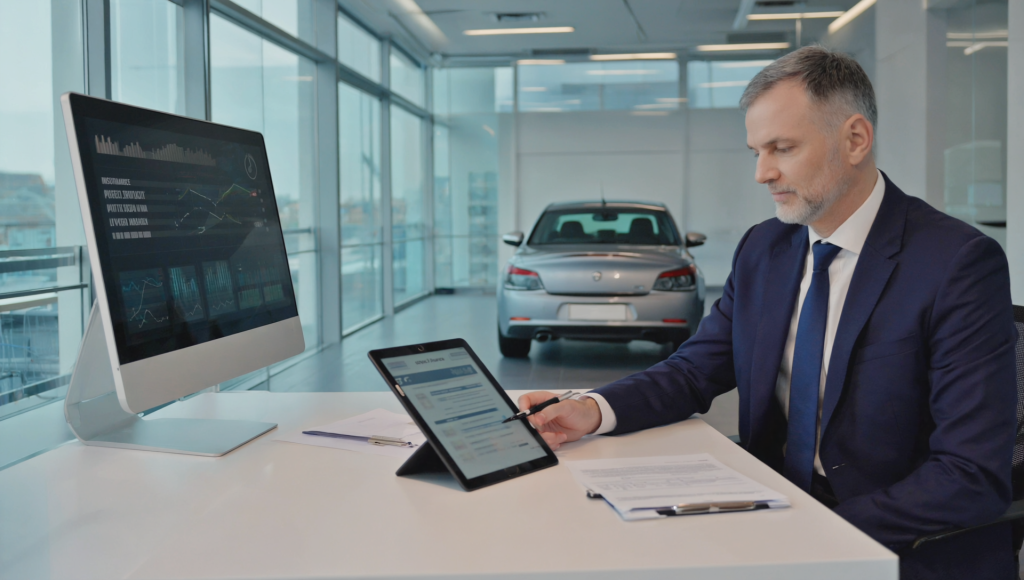Understanding Auto Insurance: A Comprehensive Guide

Auto insurance is an essential financial product that protects drivers and vehicle owners from the financial burden associated with car accidents, theft, and other unforeseen events. In today’s fast-paced world, where automobiles are an integral part of daily life, understanding the ins and outs of auto insurance is crucial. This comprehensive guide will explore the fundamentals of auto insurance, different coverage types, how to choose the right policy, and practical tips for managing claims and expenses. Whether you are a new driver or have years of experience on the road, this guide aims to provide valuable insights into making informed decisions about your auto insurance.
As vehicles become more technologically advanced and the driving environment evolves, auto insurance products have also adapted to meet new challenges. Innovations in policy management, risk assessment, and claims processing are transforming the insurance landscape. By delving into these topics, readers can gain a deeper understanding of how auto insurance works and why it remains a cornerstone of personal finance and risk management.
What Is Auto Insurance?
Auto insurance is a contract between a policyholder and an insurance company that provides financial protection against losses resulting from vehicle-related incidents. In exchange for regular premium payments, the insurer agrees to cover certain costs such as vehicle repairs, medical expenses, and liability claims arising from accidents or other covered events. The primary goal of auto insurance is to mitigate the financial risk associated with driving, ensuring that drivers are not left with overwhelming expenses in the event of an accident.
Typically, auto insurance policies include a variety of coverage options designed to address different types of risks. These may range from liability coverage, which pays for damages to other people or property if you are at fault in an accident, to comprehensive and collision coverage, which covers damage to your own vehicle. Understanding these components is vital for selecting a policy that meets your individual needs.
Types of Auto Insurance Coverage
Auto insurance policies are generally composed of several types of coverage, each serving a unique purpose:
- Liability Coverage: This is the most basic form of auto insurance, required by law in most jurisdictions. It covers the costs of injury and property damage to others if you are responsible for an accident.
- Collision Coverage: This type of coverage pays for repairs to your vehicle after an accident, regardless of who is at fault. It is particularly important for new or high-value vehicles.
- Comprehensive Coverage: Comprehensive insurance covers damages to your car that are not related to collisions, such as theft, vandalism, natural disasters, and animal strikes.
- Uninsured/Underinsured Motorist Coverage: This protects you if you are involved in an accident with a driver who does not have adequate insurance coverage.
- Medical Payments or Personal Injury Protection: This provides coverage for medical expenses incurred by you or your passengers in the event of an accident, regardless of fault.
Each type of coverage has its own limits and deductibles, which determine the amount the insurance company will pay out in the event of a claim. Choosing the right mix of coverage is essential for ensuring that you have adequate protection while also managing your premium costs.
Factors Influencing Auto Insurance Premiums
Several factors influence the cost of auto insurance premiums. Insurers use these factors to assess the risk associated with insuring a particular driver or vehicle:
- Driving History: A clean driving record with no accidents or traffic violations typically results in lower premiums. Conversely, a history of accidents or violations can significantly increase your premium.
- Vehicle Type: The make, model, and year of your vehicle play a role in determining your insurance rate. High-performance or luxury cars often come with higher premiums due to the increased cost of repairs and a higher likelihood of theft.
- Location: Where you live can impact your insurance costs. Urban areas with higher traffic density and crime rates often have higher premiums compared to rural areas.
- Age and Gender: Younger drivers and certain gender demographics may face higher premiums due to statistically higher risk levels.
- Credit Score: In many regions, insurers use credit scores as an indicator of risk. A higher credit score can lead to lower premiums, while a lower score may result in higher rates.
Other factors include the frequency of vehicle use, annual mileage, and even the level of education. Insurers combine these variables to calculate a premium that reflects the overall risk of insuring you.
How to Choose the Right Auto Insurance Policy
Selecting the right auto insurance policy involves a careful assessment of your individual needs and circumstances. Here are some key considerations:
Assess Your Coverage Needs: Consider the value of your vehicle, your driving habits, and your financial situation. If you have a new or expensive car, you may want to invest in collision and comprehensive coverage. Conversely, if you drive an older car or have a limited budget, liability coverage might suffice.
Compare Quotes: Obtain quotes from multiple insurance providers to find the best balance between coverage and cost. Online comparison tools can simplify this process by providing side-by-side estimates based on your personal information.
Review Policy Details: Carefully review the terms and conditions of each policy. Pay attention to the coverage limits, deductibles, and any exclusions that may affect your claims. Understanding these details can help you avoid unexpected out-of-pocket expenses in the event of an accident.
Consider Discounts: Many insurance companies offer discounts for various factors such as bundling policies, maintaining a good driving record, or installing anti-theft devices in your vehicle. Inquire about available discounts to potentially lower your premium.
Customer Service and Reputation: The quality of customer service and the insurer’s reputation for handling claims are important factors. Look for reviews and ratings from current policyholders to ensure that the company is reliable and responsive when you need assistance.
The Claims Process and Managing Expenses
Understanding the claims process is an essential part of managing your auto insurance. In the event of an accident or damage to your vehicle, the first step is to notify your insurance provider as soon as possible. Prompt reporting can facilitate a smoother claims process and reduce delays in receiving compensation.
Once a claim is filed, an adjuster will assess the damage and determine the extent of coverage based on your policy terms. It is important to document the incident thoroughly, including taking photographs, gathering witness statements, and obtaining a police report if necessary. This documentation will support your claim and help ensure a fair settlement.
Additionally, it is beneficial to familiarize yourself with your policy’s deductible—the amount you must pay out of pocket before the insurance coverage kicks in. Balancing a higher deductible with lower premiums is a common strategy to manage overall expenses, but it requires careful consideration of your financial situation.
Integrating Technology into Auto Insurance
The landscape of auto insurance is undergoing rapid transformation with the integration of digital technologies. Telematics, which involves using devices to monitor driving behavior, allows insurers to offer personalized premiums based on actual driving patterns. This approach, often referred to as usage-based insurance, rewards safe driving with lower rates.
In addition, mobile apps and online portals have streamlined the process of purchasing insurance, filing claims, and managing policies. These digital tools enhance the overall customer experience by providing real-time updates, convenient access to information, and efficient claim processing.
Artificial intelligence and big data analytics are also being used to assess risk more accurately and predict future claims. By analyzing vast amounts of data, insurers can tailor policies to individual drivers, ultimately leading to more competitive pricing and improved service.
Lifestyle Considerations and Preventive Measures
Beyond the specifics of auto insurance policies, lifestyle choices play an important role in managing insurance costs and ensuring long-term safety. Regular vehicle maintenance, safe driving habits, and the installation of modern safety features can reduce the likelihood of accidents and, consequently, insurance claims. Many insurers offer incentives for drivers who demonstrate responsible behavior, such as lower premiums or rewards programs.
Additionally, investing in advanced driver-assistance systems (ADAS) and other automotive safety technologies not only enhances your safety on the road but may also result in discounts on your insurance premiums. Being proactive about vehicle safety and maintenance is a key component of a holistic approach to auto insurance.
It is also important to periodically review your auto insurance policy to ensure that it continues to meet your needs. Changes in your driving habits, vehicle upgrades, or shifts in your financial situation may warrant adjustments to your coverage. Regular evaluations can help you stay on top of your insurance requirements and take advantage of any new discounts or policy enhancements.
Future Trends in Auto Insurance
The auto insurance industry is poised for continued evolution, driven by technological innovation and changing consumer expectations. The rise of autonomous vehicles, for example, is expected to significantly alter risk profiles and, in turn, insurance models. As vehicles become safer and more technologically advanced, traditional insurance paradigms will need to adapt.
Future trends include the increased use of artificial intelligence for risk assessment, more personalized insurance products based on telematics data, and the growth of on-demand insurance policies that offer coverage tailored to specific driving situations. These developments are likely to create a more dynamic and customer-centric auto insurance market.
As the industry continues to innovate, collaboration between technology companies, automotive manufacturers, and insurance providers will be crucial. These partnerships aim to create integrated solutions that enhance safety, improve customer service, and ultimately lead to more efficient and effective insurance products.
Looking forward, consumers can expect a more seamless and personalized experience with auto insurance. Enhanced digital interfaces, real-time monitoring, and proactive risk management are set to transform how drivers interact with their insurers. This shift will not only improve overall satisfaction but also contribute to safer driving environments and reduced accident rates.
In conclusion, navigating the complexities of auto insurance requires a comprehensive understanding of coverage options, risk factors, and the claims process. By leveraging technological advancements and adopting proactive safety measures, drivers can secure a policy that offers both robust protection and cost-effective solutions. As the industry continues to evolve, staying informed and regularly reviewing your policy will be key to ensuring that you are well-protected on the road.





